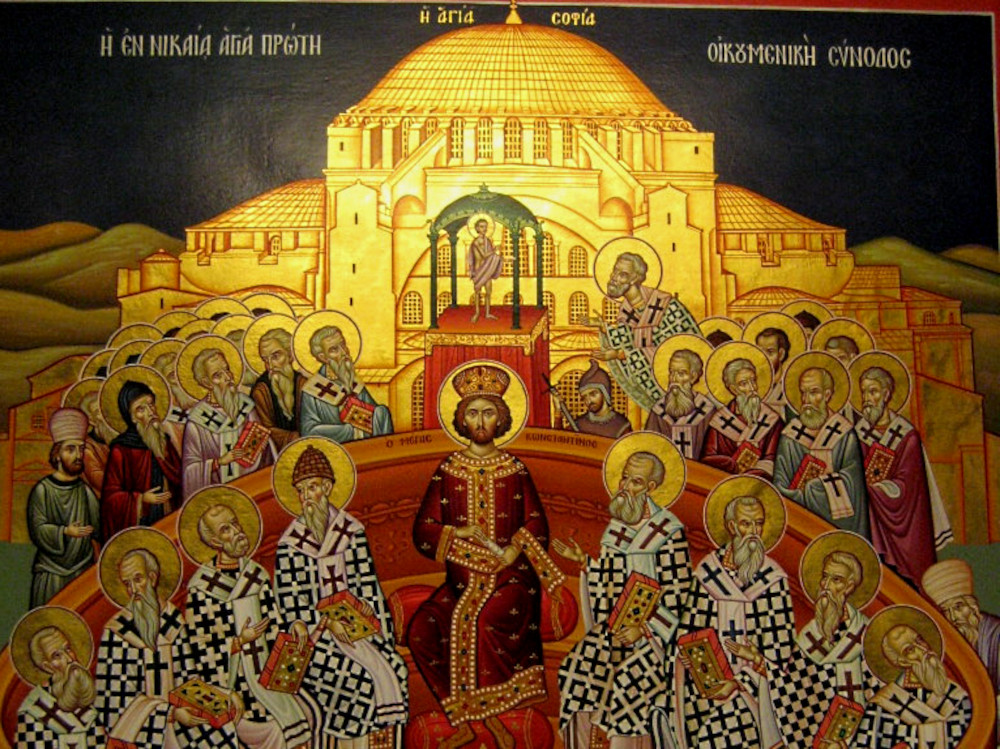1700 years ago today, on June 19m 325, the Council of Nicaea, the first ecumneical council of the Christian Church. Why the Nicean Creed that eventually came from the council is so very important was explained Dr Andrew Leslie, the Head of Theology, Philosophy, and Ethics Department at Moore College, preaching at St Andrew Cathedral, Sydney last Sunday.
Here are some key points from his sermon.
“This year is a special year and indeed the month of June is a special month in this year since it marks 1700 years to the month that thanks to the initiative of the Emperor Constantine, the first so-called ecumenical church council was held in the city of Nicaea in what is modern day Türkiye. At this council, the elements of what we call the Nicene creed of the Athanasian Creed, the Nicene Creed were laid down ,even though the creed itself wasn’t finalised until the second ecumenical council 56 years later. But it was in that first council that the essentials of what we call the doctrine of the Trinity were first hammered out and formally codified. ..
And you might think, well, I realise 1700 years is a long time, but it’s still several hundred years after the finalisation of the New Testament. And if the doctrine of the Trinity is so basic and so fundamental to Christianity, why did it take so long for the church to figure it out? Well, of course, in truth, the doctrine of the Trinity wasn’t first discovered by the Council of naia. You’ll find it in one form or another throughout all the earliest writings of the church. But it is true that it was hotly disputed and that it took quite some time for the debates to resolve and for a settled testimony or statement to be agreed upon by the church as a whole. And in fact, even after the council, there were still many decades of debate.
Now there are, I think a lot of historical reasons for that, but I think there are at least a couple of basic reasons. One is that if you go looking in the New Testament for a verse or passage of scripture that gives you a very explicit statement of the doctrine, you’re not really going to find one.
Of course, the fact that it doesn’t rise to the surface all that often in the Bible doesn’t mean that it isn’t always down below right at the foundation of everything that the Bible teaches. So perhaps you could compare the doctrine of the Trinity to the doctrine that the earth revolves around the sun. I got that right, didn’t I? A whole galaxy of scientific claims and theories stand or fall on that doctrine, but it took quite a while and quite a bit of digging and disputing for that doctrine to become the commonplace that it is now, and perhaps it’s a little bit like that with the Trinity.
See, it’s actually not that hard to state. I think I can state the doctrine of the Trinity even more briefly than the Ene creed. The doctrine of the Trinity is simply that there is one God who has three persons, father, son, and Holy Spirit, not three gods, not three parts to God, but three different persons who are all equally one God. It’s not hard to state at all, but trying to understand it or explain it is another thing.
Again, it can feel a little bit like you are trying to explain a square circle and people have come up with various analogies. The Trinity is like ice, water and steam. The trinity is like a three leaf clover. The Trinity is like a drink made up of tea, milk, and sugar. But most of the time these do more, these analogies do more to confuse than clarify.
In fact, all of those are heresies by the way, because you see if the Trinity is as CS Lewis puts it the ultimate three dimensional object that the trouble with the tiny human brain is that we can only really think about it and talk about it and picture it in two dimensions. And so you might not be surprised then that it took the earliest Christians quite some time and some false turns to hammer out something that really can be stated quite simply and succinctly.
The full service is online here.
Dean Sandy Grant, will “unpack key lines” from the Nicene Creed, in their biblical and credal context:
* Begotten, not made (Sunday 22 June)
* Born of the virgin (Sunday 29 June)
* The Spirit “who proceeds” (Sunday 6 July)
At services at 8:30am, 10:30am, or 5:00pm (in the Chapter House). Like Andrew Leslie’s sermon they will find their way on YouTube on the Cathedral channel
Image: Icon from the Mégalo Metéoron Monastery in Greece, representing the First Ecumenical Council of Nicaea 325 A.D. Image Credit: Jjensen / Wikimedia

